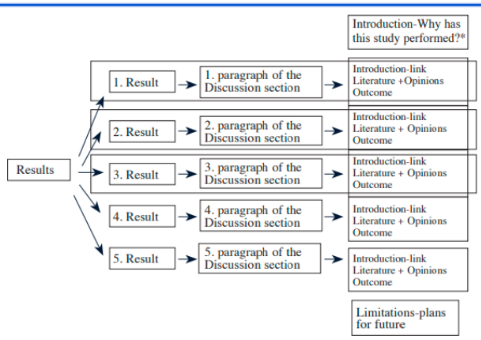Writing an inorganic chemistry dissertation is a difficult task and an amazing journey of exploration. This branch of chemistry is about understanding inorganic compounds, their chemical reactions, molecular dynamics, and uses.
With the increasing demands of science and technology, the scope of chemistry is also increasing day by day.
According to the LinkedIn report, the market for inorganic chemicals was estimated to be worth USD 1 billion in 2022. However, it is projected to grow at a compound annual growth rate (CAGR) of 5.34% to reach USD 1.51 billion by 2030.
Students often consider inorganic as one of the most difficult branches of chemistry. When it comes to writing a dissertation on inorganic chemistry, they look for someone who can write their work with great precision and clarity. In this scenario, The Academic Papers UK is the best choice for such students to avail of their dissertation writing services.
Here, we’ll go into the technique of writing an inorganic chemistry dissertation. We will also advise you on how to make the process fun and interesting in addition to instructive.
Exploring Inorganic Chemistry
Simply put, inorganic chemistry is the study of chemicals and materials that do not contain carbon-hydrogen (C-H) bonds. They surround us and work with substances and elements such as salts, minerals, and metals.
We can investigate the characteristics, processes, and uses of these inorganic compounds in various ways. And it’s similar to the science of every element in the periodic table—aside from compounds that are carbon-based.
The major uses of inorganic chemistry are:
- It is applied in environmental sciences, drug development, catalysis, and materials science.
- Chemicals and materials for industry are produced in part via inorganic chemistry.
- It supports environmental preservation, medical research, and technology development.
- Inside the field of chemistry research, inorganic chemistry explores chemical bonding and reactions inside biological systems, unlocking the secrets of coordination chemistry.
- You can use computational chemistry better to understand the behaviour of substances such as silicon dioxide.
- It also talks about environmental problems like acid rain.
- It is also essential to the development of dye-sensitized solar cells, rocket fuel, and rare earth element extraction—all of which are necessary for the advancement of modern science.
A Step-by-Step Journey of Inorganic Chemistry Dissertation Writing
The following steps are involved in the dissertation writing process. You can find this guide in various books and papers. For example, Contour-based Corner Detection and Robust Geometric Point Matching Techniques explain it like this:

Chapter 1: Introduction – Selecting Your Topic
Choosing a research topic for your dissertation is the first step in the process. The possibilities in inorganic chemistry are virtually endless. Several options are available, ranging from non-metals and transition metal complexes to organometallic compounds.
Determine your areas of interest and read up on scientific literature to choose an inorganic chemistry dissertation topic. Moreover, you should also talk to your supervisor about possible subjects to write on.
Remember that your dissertation represents your chance to contribute to the field, so pick a subject that piques your interest and enthusiasm.
Chapter 2: Review of Literature – Year-wise Mapping
After choosing your subject, it’s time to start writing a comprehensive literature study. Explore the deep ocean of books, journals, and articles on inorganic chemistry. Understanding the body of current knowledge, seeing gaps, and developing your research questions depend on this phase.
It’s similar to making a treasure map of your travels, noting the locations where you’ll go farther to gain fresh perspectives.
Chapter 3: Laboratory-Based Experiments
The synthesis and characterisation of compounds is the well-known application of this field. The real fun starts at this point of inorganic chemistry dissertation writing. The main components of your dissertation are creating experiments, carrying out reactions, and investigating the characteristics of inorganic substances.
Every reaction and characterisation gives you a piece of the puzzle to help you solve the riddles surrounding your chosen subject.
Chapter 4: Investigating and Interpreting – The Pieces of the Puzzle
Your lab data serves as the foundation for your dissertation. It is now time to understand and analyse. Use various methods, including thermodynamics, crystallography, and spectroscopy, to reveal the characteristics and behaviours of the substances you have created.
At this point, similarities and patterns begin to emerge and develop a detective working on a case.
Chapter 5: Discussion – Connecting the Dots
You should put everything together in this chapter. Talk about your results in light of your research questions and the body of current literature. What implications do your research findings show through inorganic chemistry dissertation writing? Have you discovered any undiscovered reactions or properties?
This is your opportunity to leave your mark and advance science. Follow the following strategy while writing your results and discussion that is present in a research paper: How to write a discussion section?

Chapter 6: Conclusion – The Talk of Discovery
By the time your dissertation is finished, you’ve ascended the inorganic chemistry exploration mountain. Give a brief overview of your main conclusions, and talk about the wider ramifications of your research.
This is your chance to demonstrate the significance of your study and how it has advanced the field.
Chapter 7: Citations – Honouring the Pioneers
Finding one’s way is never complete without crediting those who came before you. To acknowledge the scientists and researchers whose work impacted your dissertation, include a thorough list of references. It’s a tribute to the thinkers who have walked on top of you.
Chapter 8: Editing and Proofreading—The Last Mile
Make sure to thoroughly edit and proofread your dissertation before calling it a day. To guarantee that your writing is readable and appreciated by your colleagues, it must be precise, succinct, and devoid of errors.
Conclusion
Are you also facing issues in exploring your journey toward inorganic chemistry dissertation writing? If yes, no more worries, as we have described all the important chapters of the dissertation here.
By following the above-mentioned steps, you can write a perfect dissertation on inorganic chemistry. You must have a clear understanding of the topic first, and then your research questions will lead you towards success.
Whether you are unable to manage plenty of tasks or you don’t have the skills to write a dissertation, you should seek help from online dissertation writing services. You can contact to experts, as it is a trustworthy platform that has experienced dissertation writers in this field.

